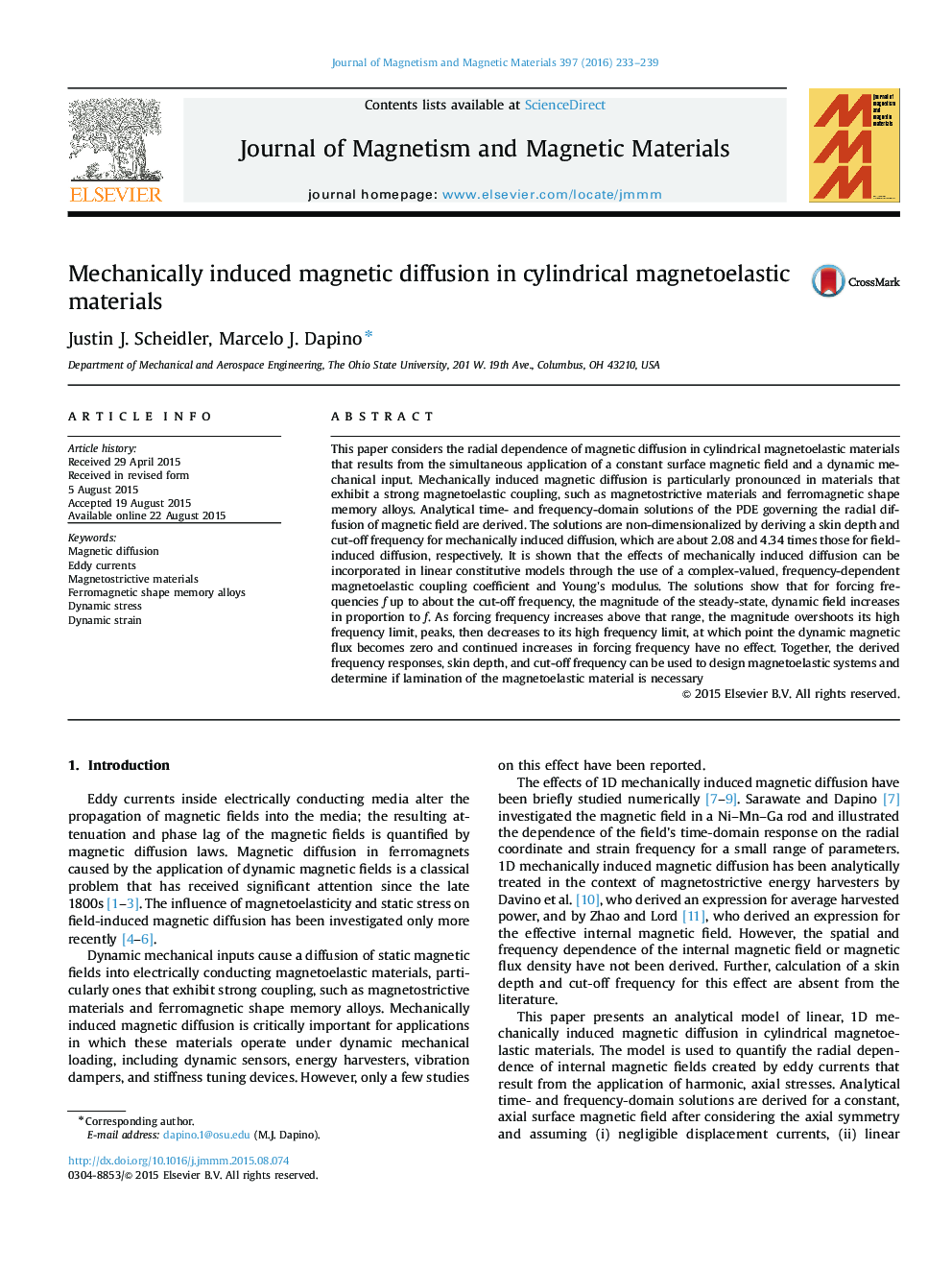| Article ID | Journal | Published Year | Pages | File Type |
|---|---|---|---|---|
| 1798772 | Journal of Magnetism and Magnetic Materials | 2016 | 7 Pages |
•Magnetic field diffusion due to dynamic stresses is investigated.•The effect is particularly significant in magnetoelastic materials.•Analytical solutions of the PDE governing the radial diffusion of magnetic field are derived.•Mechanically induced diffusion can be modeled through complex-valued, frequency-dependent coefficients.
This paper considers the radial dependence of magnetic diffusion in cylindrical magnetoelastic materials that results from the simultaneous application of a constant surface magnetic field and a dynamic mechanical input. Mechanically induced magnetic diffusion is particularly pronounced in materials that exhibit a strong magnetoelastic coupling, such as magnetostrictive materials and ferromagnetic shape memory alloys. Analytical time- and frequency-domain solutions of the PDE governing the radial diffusion of magnetic field are derived. The solutions are non-dimensionalized by deriving a skin depth and cut-off frequency for mechanically induced diffusion, which are about 2.08 and 4.34 times those for field-induced diffusion, respectively. It is shown that the effects of mechanically induced diffusion can be incorporated in linear constitutive models through the use of a complex-valued, frequency-dependent magnetoelastic coupling coefficient and Young's modulus. The solutions show that for forcing frequencies f up to about the cut-off frequency, the magnitude of the steady-state, dynamic field increases in proportion to f. As forcing frequency increases above that range, the magnitude overshoots its high frequency limit, peaks, then decreases to its high frequency limit, at which point the dynamic magnetic flux becomes zero and continued increases in forcing frequency have no effect. Together, the derived frequency responses, skin depth, and cut-off frequency can be used to design magnetoelastic systems and determine if lamination of the magnetoelastic material is necessary
